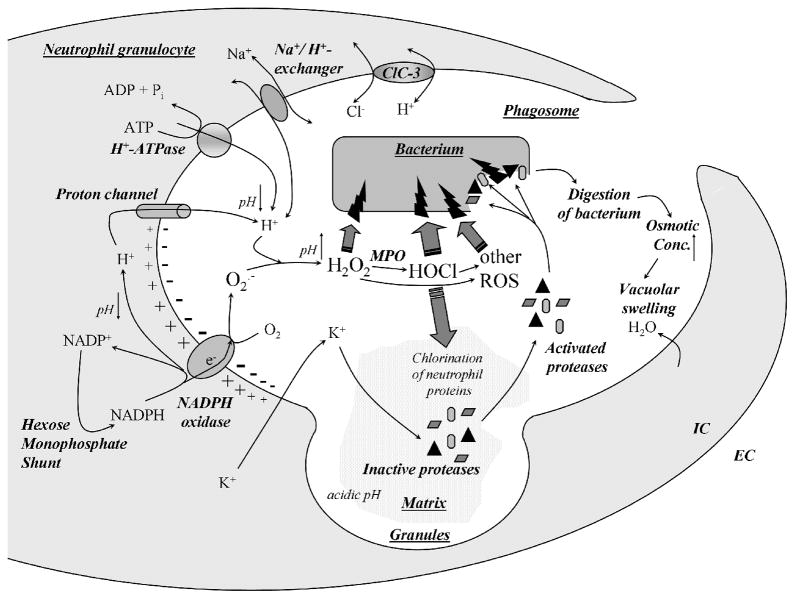Figure 4. The neutrophil phagosome.
Upon engulfment of bacteria into the neutrophil phagosome, granules fuse with the phagosome and the phagocytic NADPH oxidase is assembled and activated on the phagosomal membrane. By transporting electrons from cytosolic NADPH, the phagosomal membrane depolarizes as superoxide is produced in the phagosome lumen. Superoxide gives rise to the whole spectrum of reactive oxygen species that are highly reactive and attack bacteria. The Nox2-generated depolarization drives protons and potassium ions into the phagosome. The protons maintain a neutral pH in the phagosome required for optimal protease activity and sustained oxidase function. Potassium ions liberate and activate latent proteases from the granule matrix, allowing them to attack and destroy bacteria.

